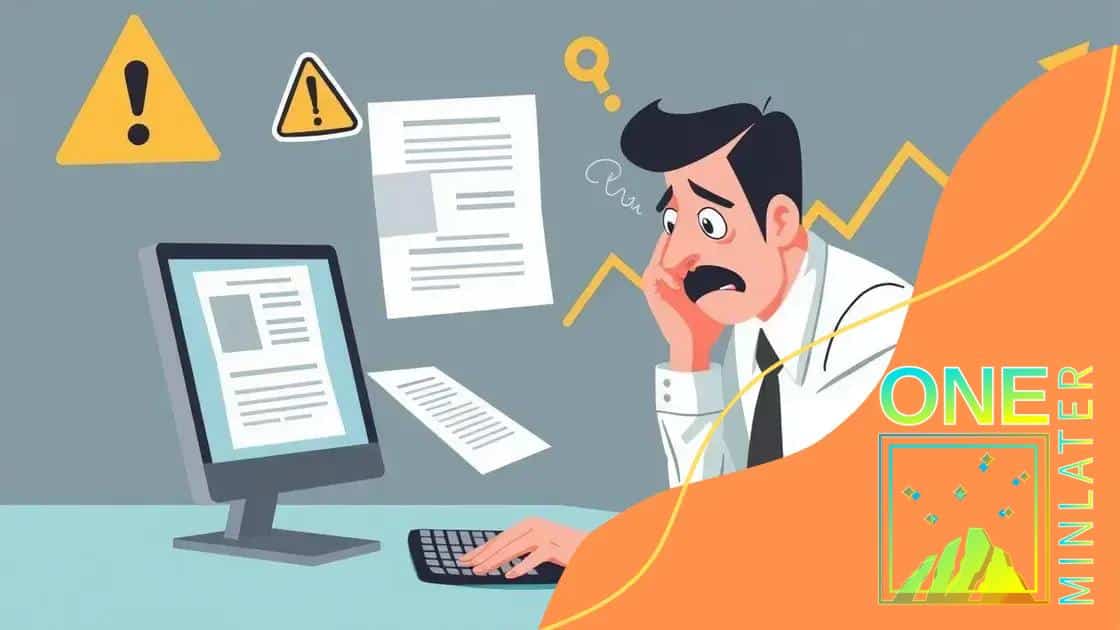Alternative lending models using peer-to-peer networks

Alternative lending models using peer-to-peer networks connect borrowers directly with lenders, offering benefits like lower interest rates, quicker approvals, and flexible terms, while also presenting risks such as loan defaults and fraud.
Alternative lending models using peer-to-peer networks are reshaping how we think about borrowing and lending money. Have you ever considered how these platforms impact both borrowers and investors? Let’s dive into this innovative financial approach.
Understanding peer-to-peer lending
Understanding peer-to-peer lending is essential for anyone looking to explore new ways of borrowing and lending money. This innovative model connects borrowers directly with lenders through online platforms, cutting out traditional banks as intermediaries.
In this approach, individuals or businesses can request loans, and investors can offer funds in exchange for interest. Most importantly, peer-to-peer lending typically offers lower rates for borrowers and better returns for lenders compared to traditional banks.
How Does It Work?
When a borrower seeks a loan, they submit their application on a peer-to-peer platform. The platform evaluates the creditworthiness of the borrower, which assists lenders in deciding whether to fund the loan.
Key Benefits of Peer-to-Peer Lending
- Lower Interest Rates: Peer-to-peer lenders often face less overhead than banks, which allows them to offer competitive rates.
- Quick Processing: The online nature of these platforms can speed up the loan approval process.
- Direct Access: Borrowers and lenders can communicate directly, fostering transparency.
Additionally, many platforms provide tools to help borrowers understand their options better. This helps make informed decisions about the loan terms and amount. It’s also possible for lenders to diversify their investments by funding multiple loans, which can lower their risk.
Understanding the risks is equally important. Borrowers may face higher fees for late payments or defaults, and lenders have to consider the possibility of losing their investment if borrowers do not repay.
As more people learn about the benefits of this lending model, the popularity of peer-to-peer lending continues to grow. By harnessing technology, it is changing the way we think about personal and business finance.
Benefits of alternative lending models
Benefits of alternative lending models are becoming increasingly clear as more borrowers and investors seek options outside traditional banking. These innovative financial solutions offer several advantages that can greatly benefit both parties.
One major benefit is improved access to capital. Many borrowers who may not qualify for traditional loans due to strict credit requirements find alternative lending models more accommodating. This opens the door for individuals and businesses to obtain the funding they need.
Cost Savings
Alternative lending often comes with lower fees and interest rates compared to conventional banks. Lenders can pass on savings from reduced operational costs to borrowers. This means:
- Lower interest rates: Borrowers can save significantly on their loan repayments.
- Fewer fees: Many alternative platforms eliminate or reduce origination fees, making borrowing cheaper.
- Transparent pricing: Borrowers can easily understand their costs without hidden fees.
Moreover, peer-to-peer networks enhance financial inclusion. By leveraging technology, these platforms make it easier for individuals with limited credit histories to secure funding. This democratizes access to financial resources, fostering a more inclusive economy.
Quick processing times are another key benefit. Many alternative lending platforms can approve loans within days, giving borrowers faster access to funds. This speed is crucial for businesses needing immediate cash flow or individuals facing unexpected expenses.
The flexibility of loan terms is also a significant advantage. Borrowers can often choose repayment schedules that suit their financial situations. This tailored approach helps ensure that borrowers are more likely to make timely payments.
Risks associated with peer-to-peer networks

Risks associated with peer-to-peer networks are an important aspect to consider when exploring alternative lending models. While these platforms provide unique opportunities, they also carry certain risks that both borrowers and lenders should be aware of.
One significant risk is the potential for loan defaults. Since peer-to-peer lending often caters to individuals with less established credit histories, there is a higher likelihood that some borrowers may be unable to repay their loans. This situation can result in financial losses for lenders who fund these loans.
Fraud and Scams
Fraud is another concern in the peer-to-peer lending space. Without stringent regulations, some platforms may attract fraudulent activities. Here are common fraud risks:
- Fake borrower profiles: Some individuals may create false identities to obtain loans.
- Phishing attempts: Lenders could be targeted by scammers trying to steal sensitive information.
- Manipulation of reviews: Borrowers could artificially inflate ratings to seem more trustworthy.
Another risk factor is the lack of protection that comes with traditional banking systems. In most cases, alternative lending platforms do not offer the same level of customer service or dispute resolution when issues arise. Borrowers may find it challenging to resolve problems, leading to frustration and miscommunication.
Additionally, peer-to-peer lending can be less predictable than traditional loans. Market changes, economic downturns, or shifts in borrower behavior can affect the overall performance of loans funded through these platforms. This uncertainty makes it essential for lenders to perform due diligence before committing their funds.
Understanding these risks allows participants in the peer-to-peer lending market to make informed decisions. By recognizing potential pitfalls, both borrowers and lenders can take steps to protect their interests.
How to choose the right platform
Choosing the right platform for peer-to-peer lending is crucial for both borrowers and lenders. With various options available, knowing what to look for can make a significant difference in your experience.
First, consider the platform’s reputation. Look for reviews and ratings from other users. A reliable platform should be transparent about its fees and lending processes. Additionally, check if they are regulated and have a solid track record.
Factors to Evaluate
When assessing peer-to-peer lending platforms, keep these important factors in mind:
- Loan Terms: Review the types of loans offered, including rates and repayment terms. Ensure they fit your financial needs.
- Fees: Understand all fees associated with borrowing and lending, such as origination and servicing fees.
- Funding Speed: Some platforms process loans faster than others. Determine how soon you need the funds.
Moreover, consider the user interface of the platform. A straightforward, intuitive design can enhance your experience, making it easier to navigate the application and funding process.
Security is another critical aspect. Look for platforms that take data protection seriously and use strong encryption to safeguard your personal and financial information. This helps prevent fraud and ensures a safer transaction environment.
Finally, think about customer support. A platform that offers solid customer service can assist you when issues arise, providing reassurance and guidance throughout your lending or borrowing journey.
The future of lending in a digital world
The future of lending in a digital world is rapidly evolving, driven by technological advancements and changing consumer behaviors. As more people rely on digital platforms for financial transactions, the landscape of lending is transforming.
One significant trend is the rise of artificial intelligence in lending. AI tools can assess creditworthiness more accurately by analyzing a wider range of data. This leads to better offers for borrowers and reduced risk for lenders. Furthermore, AI can personalize the lending experience, making recommendations based on individual financial histories.
Blockchain Technology
Another innovation impacting the future of lending is blockchain technology. This decentralized system ensures secure and transparent transactions, reducing the potential for fraud. As blockchain adoption grows, lending processes may become even more efficient.
Peer-to-Peer Growth
Peer-to-peer (P2P) lending is also expected to expand. More platforms are emerging, connecting borrowers with lenders directly. This trend often results in lower rates and increased flexibility for borrowers.
Additionally, mobile technology is reshaping how consumers engage with lenders. The ability to apply for loans, manage repayments, and communicate with lenders all through mobile devices enhances accessibility and convenience. This accessibility is especially important for individuals in underserved markets.
As these trends continue to develop, it is essential for both borrowers and lenders to stay informed. Understanding the implications of these changes will help individuals make better financial decisions in an increasingly digital world.
FAQ – Frequently Asked Questions about Alternative Lending Models
What are peer-to-peer lending platforms?
Peer-to-peer lending platforms connect borrowers directly with lenders, allowing individuals to obtain loans without traditional banks.
What benefits do alternative lending models offer?
They typically offer lower interest rates, quicker approval times, and more flexible loan terms compared to traditional banking.
What risks should I be aware of?
Potential risks include loan defaults, fraud, and the lack of customer protection compared to traditional banks.
How can technology improve the lending experience?
Technology, such as AI and blockchain, enhances the accuracy of credit assessments and ensures secure transactions.





